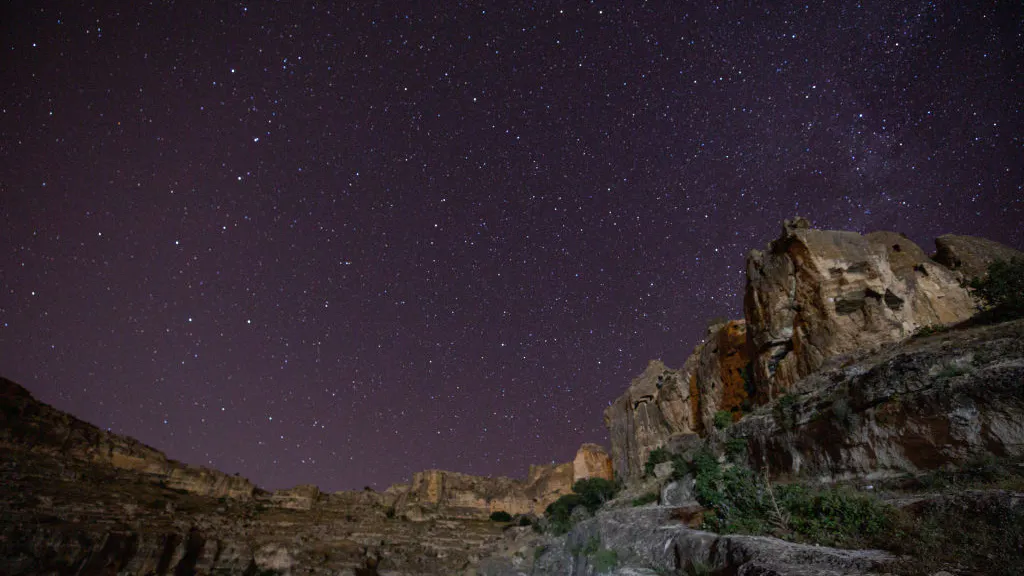Scientists who found a new way to ascertain the origins of Earth’s minerals and their diverse formations may have offered a path to discover whether life exists elsewhere in the universe.
Doctors Robert Hazen and Shaunna Morrison from the Carnegie Institute of Science authored a study offering a new approach to the origins of minerals. Prior approaches involved the documentation of different “mineral species” based on their combinations of chemical composition and crystal structure, but Hazen and the team studied how and when minerals appeared in the estimated 4.5 billion years of Earth history.
“What mineral-forming environments occur on the Moon, Mars, and other terrestrial worlds? Enumerating paragenetic modes, and placing each mineral species into one or more of those categories, offers an opportunity to evaluate extraterrestrial mineralogy with a new perspective,” the scientists suggested.
“The remarkable work of Hazen and Morrison provides a potential way to predictably discover possible minerals in nature. Minerals can be key to reconstructing the entire ‘past life’ and predicting the ‘future life’ of Earth, and understanding mineral evolution will offer a novel path for us to be able to explore deep space and search for extraterrestrial life and habitable planets in the future,” stated Anhuai Lu, President of the International Mineralogical Association.
The authors posited:
A timeline for mineral-forming events suggests that much of Earth’s mineral diversity was established within the first 250 million years. If life is rare in the universe, then this view of a mineralogically diverse early Earth provides many more plausible reactive pathways over a longer timespan than previous models. If, however, life is a cosmic imperative that emerges on any mineral- and water-rich world, then these findings support the hypothesis that life on Earth developed rapidly in the early stages of planetary evolution.
By studying mineral genesis, the scientists increased the current number of the number of “mineral kinds” from the roughly 6,000 mineral species recognized by the International Mineralogical Association (IMA) to more than 10,500.
Hazen and colleagues looked at 5,659 recognized mineral species and found nine were generated instantly by lightning or meteor strikes or water-rock interactions or transformations at high pressures and temperature that took hundreds of millions of years.
Among the study’s findings: Water was involved in the formation of more than 80% of mineral species; life played a direct or indirect role in the formation of almost half of known mineral species; only 41 elements are essential constituents in over 42% of Earth’s minerals; roughly 296 known minerals pre-date Earth, and the oldest known minerals are tiny, durable zircon crystals, almost 4.4 billion years old.
“The work also tells us something very profound about the role of biology,” Hazen continued. “One third of Earth’s minerals could not have formed without biology – shells and bones and teeth, or microbes, for example, or the vital indirect role of biology, such as by creating an oxygen-rich atmosphere that led to 2,000 minerals that wouldn’t have formed otherwise.”
“This work fundamentally changes our view of the diversity of minerals on the planet,” Hazen asserted.
“For example, more than 80% of Earth’s minerals were mediated by water, which is, therefore, fundamentally important to mineral diversity on this planet. By extension, this explains one of the key reasons why the Moon and Mercury and even Mars have far fewer mineral species than Earth,” he noted as Eurekalert! reported.
“Each mineral specimen has a history. Each tells a story. Each is a time capsule that reveals Earth’s past as nothing else can,” Hazen concluded.
Professor Patrick Cordier of the Université de Lille/Institut Universitaire de France, stated:
Hazen and colleagues have changed this way of considering minerals. In addition to chemical composition and physical properties, Hazen emphasizes their conditions and contexts of formation, and a new way of seeing minerals appears. Minerals become witnesses, markers of the long history of matter that takes shape in supernova explosions, gathers in planetary systems in formation and even, on a planet like Earth, accompanies the emergence and development of life.
Most scientists produce data, some are lucky enough to make discoveries, few are the ones who transform our view of the world. Hazen is one of them.

.png)
.png)

